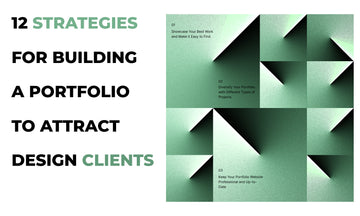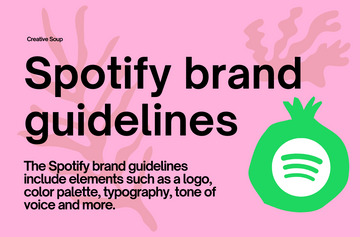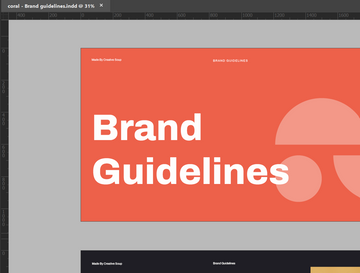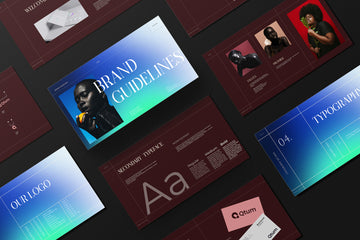Essential Tips to Showcase Your Skills and Land Your Dream Projects
Introduction:
Welcome to our beginner's guide on building a design portfolio that will attract clients! As a designer, your portfolio is your most valuable asset when it comes to showcasing your skills and landing new projects. In this post, we'll explore twelve strategies that will help you create a portfolio that stands out and attracts design clients. From showcasing your best work to building a strong personal brand, let's dive in and discover the secrets to a successful portfolio.
Showcase Your Best Work and Make it Easy to Find
The key to attracting design clients is to showcase your best work prominently. Your portfolio should feature your most impressive projects that highlight your skills and experience. Whether you choose to have a website or use an online platform, make sure your portfolio is easily accessible and visually appealing. Consider organizing your work into categories or using tags to make it easy for potential clients to find what they are looking for.
Diversify Your Portfolio with Different Types of Projects
A diverse portfolio demonstrates your versatility and ability to work on a variety of projects. Include a mix of personal and professional projects, different industries, and design styles. This shows potential clients that you can adapt to their specific needs and deliver outstanding results. Remember, variety is the spice of life, and it applies to design portfolios too!
Keep Your Portfolio Website Professional and Up-to-Date

Your portfolio website is your online storefront, so it's crucial to make it look professional and keep it up-to-date. Choose a clean and modern design that aligns with your personal brand. Ensure that your website is easy to navigate, with clear sections and intuitive menus. Regularly update your portfolio with your latest work to demonstrate your growth and skill progression over time. Also, make sure your website is mobile-friendly, as an increasing number of clients browse portfolios on their smartphones and tablets.
Highlight Your Process and Problem-Solving Skills

Clients not only want to see the final product but also the journey you took to get there. Showcasing your design process and problem-solving skills is just as important as the outcome. Include sketches, wireframes, and design iterations to give clients a glimpse into your creative problem-solving process. Explain the challenges you faced and how you overcame them, demonstrating your ability to think critically and find effective solutions.
Focus on Results and Impact, Not Just Aesthetics

While aesthetics play a crucial role in design, it's equally important to focus on the results and impact your work has had. When presenting your projects, emphasize how your design decisions helped solve a problem or improve a business. Did your design increase conversion rates? Did it enhance user experience? Tell the story behind your work and showcase the tangible results you achieved.
Build a Strong Personal Brand

In a competitive market, a strong personal brand can help you stand out from other designers and make it easier for potential clients to remember you. Develop a consistent visual identity that reflects your personality and style. Define your unique value proposition, the specific benefits you offer to clients, and why they should choose you over other designers. Consistency is key here - make sure your personal brand is reflected across all your online and offline channels.
Create Case Studies to Demonstrate Your Experience
Case studies are a powerful tool in your portfolio that allows you to showcase your experience and expertise. They provide a deeper understanding of your design process and the impact of your work. When creating case studies, include details about the design challenge you faced, the steps you took to solve it, and the results you achieved. Describe the research you conducted, the insights you gained, and how you translated those insights into successful design solutions. Use visuals, such as before-and-after comparisons or interactive prototypes, to bring your case studies to life and engage potential clients.
Network and Collaborate with Other Professionals

Building relationships with other professionals in your field can open doors to new opportunities and recommendations from others. Attend design events, join online communities and forums, and actively engage in conversations. Collaborating with other designers or professionals from complementary fields can also expand your network and lead to exciting projects. Remember, networking is not just about promoting yourself; it's about building genuine connections and supporting others in the design community.
Stay Current with Industry Trends and Technology
The design industry is constantly evolving, with new trends and technologies emerging regularly. To attract design clients, it's important to stay up-to-date with the latest advancements. Attend conferences, workshops, and webinars to learn from industry leaders and gain insights into emerging trends. Follow influential design blogs and publications, and actively participate in online discussions. By demonstrating your knowledge of current design practices and tools, you position yourself as a valuable and reliable resource for clients.
Offer Unique and Creative Solutions to Clients

Design clients are often looking for fresh perspectives and innovative solutions to their problems. Set yourself apart by offering unique and creative ideas that go beyond conventional design approaches. Take risks, think outside the box, and experiment with different design techniques. Show potential clients that you can bring a fresh and unique perspective to their projects, which will make you a valuable asset to their team.
Develop a Niche and Become an Expert

Specializing in a specific area can help you become an expert and stand out in a crowded market. Choose a niche that aligns with your interests and skills, and focus your portfolio on projects within that niche. By positioning yourself as an authority in a particular field, you become the go-to designer for clients seeking expertise in that area. This specialization not only sets you apart from generalists but also allows you to command higher rates and attract clients who value your specialized knowledge.
Use Testimonials and References to Build Credibility

Client testimonials and references are powerful tools to build credibility and establish trust with potential clients. Include testimonials on your website and in your portfolio to showcase the positive impact you have had on previous clients. Reach out to satisfied clients and kindly request their feedback or a testimonial. Additionally, ask for permission to use their names as references, as potential clients may want to speak directly with someone who has worked with you before. Testimonials and references provide social proof and reassurance to clients, making it more likely for them to choose you for their design projects.
Conclusion:
Building a portfolio that attracts design clients is a journey that requires careful thought, continuous improvement, and strategic decision-making. By following these twelve strategies, you'll be well on your way to creating a compelling portfolio that showcases your skills, attracts your target audience, and helps you land your dream design projects. Remember to regularly update your portfolio, stay current with industry trends, and always strive for excellence in your work. Now, go out there and start attracting design clients with your exceptional portfolio!
Access To Our FREE toolbox of resources including Branding Agreement, A3 Brand Guidelines, Invoices and so much more. Also, get our best weekly newsletter updates.









